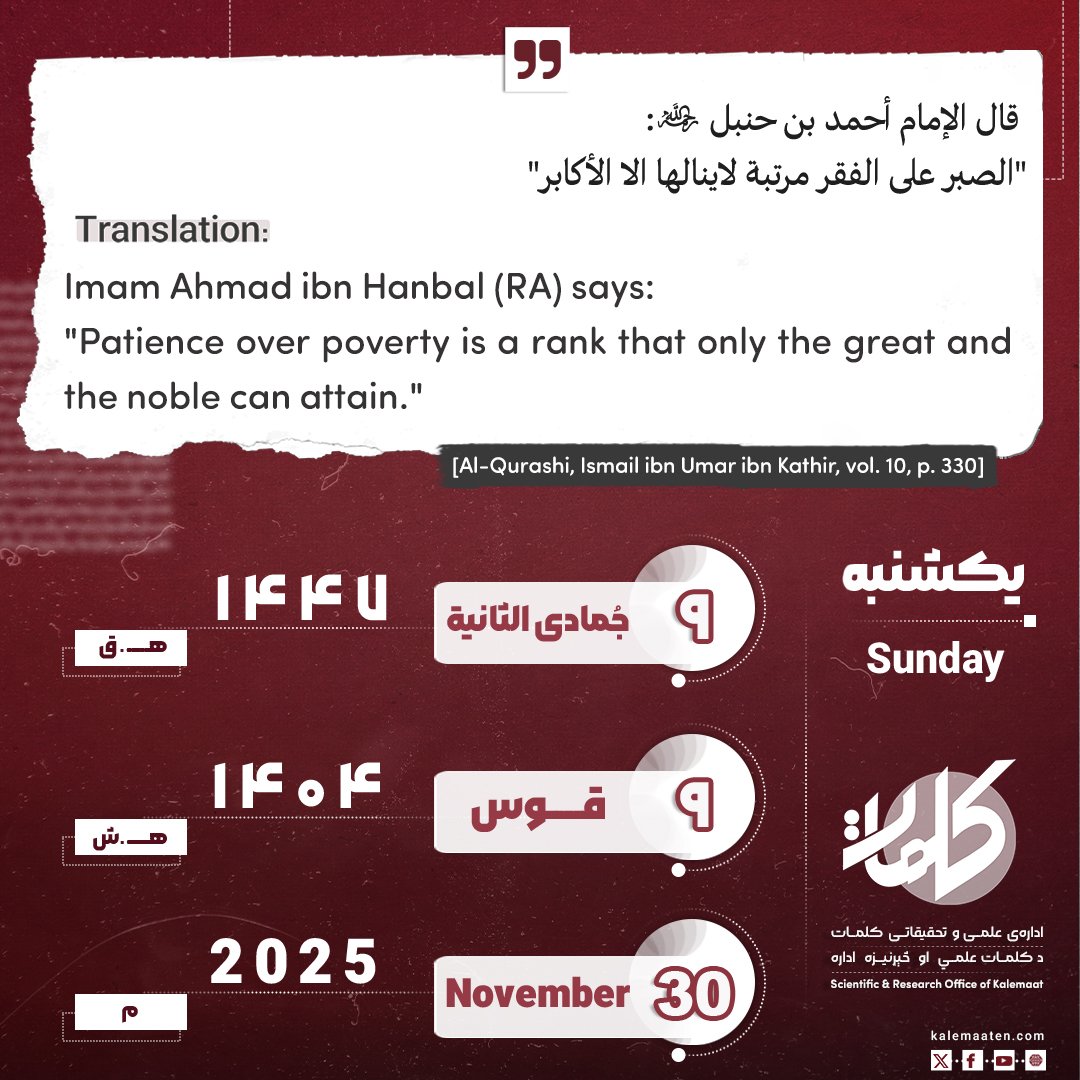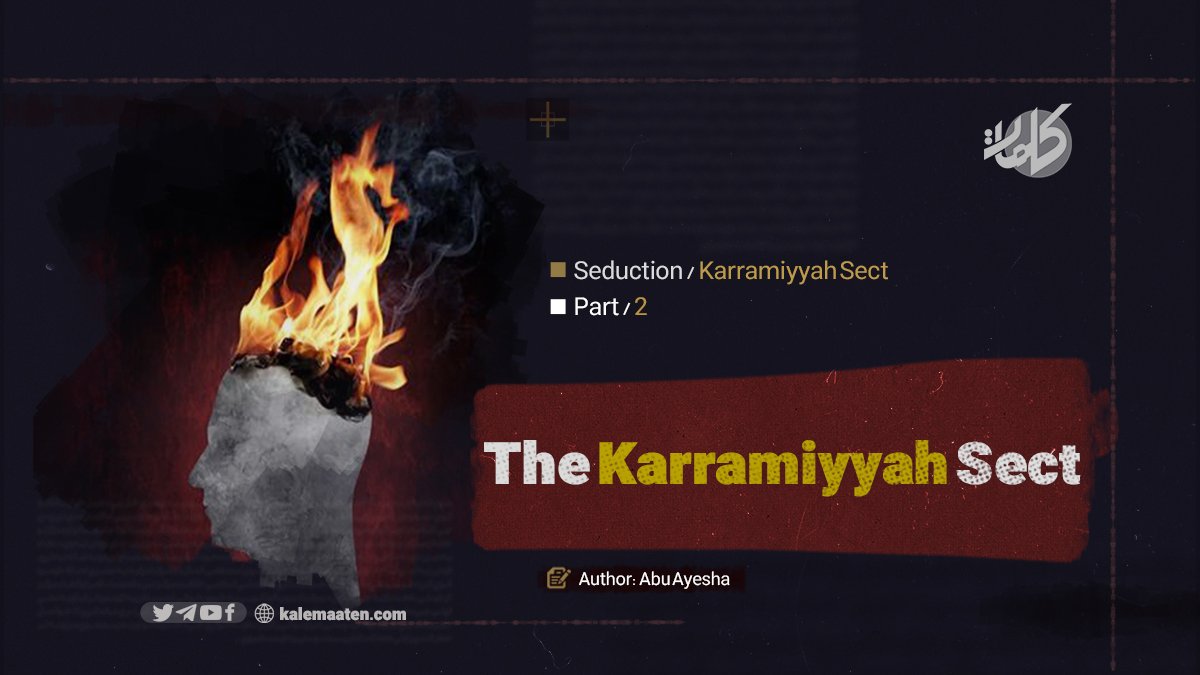Author: Abu Ayesha
The Karramiyyah Sect (Part Two)
The Karramiyyah Sect:
The name of this sect is “Karramiyyah” (with a fatḥah on the letter “Kaf” and a shaddah on the “Ra a”) or “Karramiyyah” (with a kasrah on the “Kaf” and a softened “Ra a”). This sect is attributed to Muhammad ibn Karam. [1]
One of the key discussions here involves the proper pronunciation of this sect’s name: whether it is Karramiyyah (with a fatḥah on the “Kaf” and a shaddah on the “Ra a”) or Karramiyyah (with a kasrah on the “Kaf” and no shaddah on the “Ra a”). Scholars have differing views on this matter, and we will examine some of their opinions below:
1. In the book Mukhtaṣar Tārīkh Dimashq, concerning the biography of Muhammad ibn Karam, it states: “Muhammad ibn Karrām ibn ‘Irāq ibn Hi zabah, Abu al-Bara’ Abu ‘Abd Allāh al-Sistani, was the shaykh of the sect known as the Karramiyyah, and the word ‘Karrām’ is pronounced with a fatḥah on the ‘Kaf’ and a shaddah on the ‘Ra a’.” [2]
2. The author of Tabsīr al-Muntabih bi-Tahrir al-Mutashabih says: “Both forms [with and without shaddah] have been Stated.” [3]
Founder of the Karramiyyah Sect:
In Siyar A‘lām al-Nubalā’, regarding the founder of the Karramiyyah sect, it is stated: “Muhammad ibn Karam al-Sistani was the innovator and leader of the Karramiyyah. He was a devout ascetic, worshiper, pious, well-known, and had many followers. However, his flaw was that he narrated baseless and weak reports. Ibn Karam spent a period in prison and was later exiled. He was an austere worshiper but lacked knowledge.” [4]
The Karramiyyah were followers of Abu ‘Abd Allah Muhammad ibn Karam, one of the ascetics and devout figures of Sistani. A group of people, impressed by his ascetic lifestyle, were misled and adopted his beliefs and doctrines.
The Karramiyyah sect is attributed to Muhammad ibn Karrām al-Sistani. During the rule of Muhammad ibn Taher ibn ‘Abd Allah ibn Taher, who governed Khurāsān from 248 to 259 AH, Ibn Karrām came to Nishapur and began spreading his beliefs. Gradually, his teachings developed into a religious movement. This socio-religious movement persisted in Nishapur from the mid-third century AH at least until the early fifth century AH and had leaders who held religious authority over the people. [5]
Muhammad ibn Karam was a deviant and misguided figure and the head of the Karramiyyah sect. He was born in a village near Zarang in Sistan and later entered Khurasan, frequently associating with Aḥmad ibn Ḥarb, a renowned ascetic. Despite being a well-known worshiper with many followers, his main flaw was the transmission of fabricated reports. Since he had been rejected by scholars, he chose among the most deviant and corrupt sects and propagated fabricated hadiths. He later kept company with Juwaybarī and Ibn Tamīm, both of whom are suspected to have fabricated over one hundred thousand hadiths. [6]
The founder of the Karramiyyah sect was Abu ‘Abd Allāh Muhammad ibn Karrām ibn ‘Irāq (or ‘Arrāf) ibn Khuzābah ibn al-Barā’, who died in 255 AH. He was born in one of the villages near Zarang in Sistan and was reportedly from the Banū Nizār tribe. Among sources, only Khwāfī mentioned that he was born in Mecca and that he died at the age of 87, suggesting he was born around 168 AH. He grew up in Sistan, where he initially began his missionary activities, but the people of Sistan eventually expelled him from the region. According to Fakhr al-Rāzī, he later traveled to Ghur, where the people accepted his Da’wah. [7]
The Karramiyyah were followers of Abu ‘Abd Allah Muhammad ibn Karam, one of the ascetics of Karam. His followers were deceived by his pious demeanor and followed him. Later, he and his companions were expelled from Sistan, migrated to Georgia, and settled there. They invited the local people to their doctrines, and the people accepted and inclined towards them. The sect remained in that region thereafter. [8]
The reason for the spread of the Karramiyyah’s beliefs was the frequent travels of Muhammad ibn karam himself. The earliest traces of this sect appeared in Sistan. Most of the early followers were farmers and poor people. It should be noted that the poor, the needy, and peasants formed the initial core of this sect. However, over time, the sect expanded and attracted a wide range of people under its banner.
“Although the early followers of the Karramiyyah were poor, through their distinctive methods of preaching, the Karramiyyah succeeded in penetrating the upper classes and elites. During the reign of Mahmood of Ghazna, some judges, ambassadors, writers, and bureaucrats joined the ranks of the Karramiyyah.” [9]
It has been narrated in his biography that many leaders of this sect were considered by their followers as true representatives of Islam. Their preachers acted with great zeal and enthusiasm.
Continues…
Previous Part
References:
[1] Masoud, Mohammad Taher. Beliefs of Ahl al-Sunnah wa al-Jama’ah. Translated by Mohammad Ebrahim Gorgij, First Edition: 2014 [1393 Solar Hijri], p. 275.
[2] Al-Ansari Ibn ’Asakir, Muhammad ibn Makram ibn Ali. Mukhtasar Tarikh Dimashq li Ibn ’Asakir. Edited by Rouhiya al-Nahhas, Riyadh Abdul-Hamid Murad, and Muhammad Muti’, 1402 AH / 1984 CE, Vol. 23, p. 178.
[3] ‘Asqalani, Ibn Hajar. Tabsir al-Muntābih bi-Tahrir al-Mushtabih. Edited by Muhammad Ali al-Najjar, Reviewed by Ali Muhammad al-Bijawi, undated, Section: Letter Kaf, Vol. 3, p. 1191.
[4] al-Dhahabi, Shams al-Din Abu ‘Abd Allah Muhammad ibn Ahmad. Siyar A‘lam al-Nubala’, 1427 Solar Hijri / 2006 CE, Section: Muhammad ibn Karram, Vol. 9, p. 411.
[5] Garajian, Aghdas. “An Analysis of the Most Significant Cultural and Social Activities of the Karramiyyah in Nishapur During the 3rd–5th Centuries AH.” Published in the Monthly Scientific-Research Journal Iranian Political Sociology, Fifth Year, 2022 [1401 Solar Hijri], p. 859.
[6] Al-Dorar al-Sunniyyah Website, Article Title: The Death of Muhammad ibn Karram al-Sijistani, the Leader of the Karramiyyah Sect.
[7] Rouhi, Alireza. “The Karramiyyah in Khurasan.” Published in the Scientific-Research Quarterly Greater Khurasan Research Journal, 2012 [1391 Solar Hijri], p. 24.
[8] al-Razi, Fakhr al-Din. The Beliefs of the Muslim and Polytheist Sects. Reviewed and Edited by Ali Sami al-Nashar, 1356 AH / 1938 CE, p. 67.
[9] Garajian, Aghdas. “An Analysis of the Most Significant Cultural and Social Activities of the Karramiyyah in Nishapur During the 3rd–5th Centuries AH.” Published in the Monthly Scientific-Research Journal Iranian Political Sociology, Fifth Year, 2022 [1401 Solar Hijri], p. 871.



